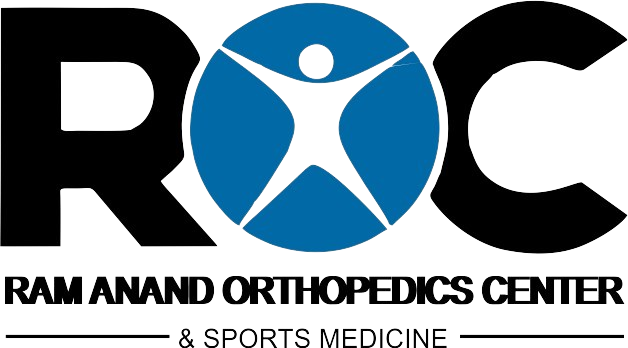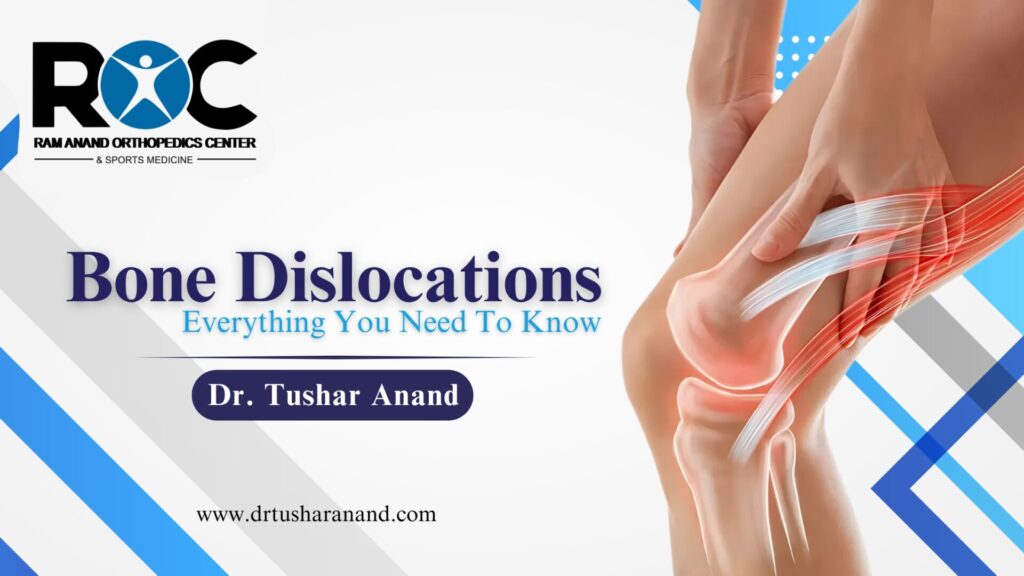Bone Dislocation: Everything You Need To Know
Bone dislocation is a painful condition that occurs when the ends of your bones are forced out of their normal positions in the joint. This injury can affect any joint in the body, including the shoulder, elbow, knee, hip, and fingers. A dislocated bone requires immediate medical attention to avoid long-term complications. In this blog, we’ll discuss the causes, symptoms, treatments, and prevention of bone dislocations.
Causes of Bone Dislocation
A bone dislocation typically happens as a result of trauma or injury. Some of the most common causes include:
- Falls or Accidents: A sudden fall, especially on an outstretched hand, can lead to joint dislocation. Sports injuries, car accidents, or other physical traumas also pose a high risk.
- Sports Injuries: High-contact sports such as football, rugby, or basketball often cause dislocations due to the intensity and physicality involved.
- Physical Overexertion: Lifting heavy objects improperly or twisting your joints can lead to dislocation, particularly in people who have a history of joint problems.
- Weak Ligaments or Congenital Conditions: Some people are born with weaker ligaments or conditions that predispose them to joint injuries.
Symptoms of Bone Dislocation
When a bone is dislocated, it will usually cause immediate and severe pain. The symptoms of bone dislocation include:
- Visible Deformity: The joint may appear visibly out of place or deformed.
- Swelling and Bruising: The area around the dislocated joint will swell rapidly and may bruise.
- Restricted Movement: You may find it impossible or extremely painful to move the affected joint.
- Numbness and Tingling: In some cases, dislocation can affect the surrounding nerves, leading to a sensation of numbness or tingling.

Immediate Actions to Take
If you suspect a bone dislocation, it’s essential to take quick action to avoid further damage:
- Do Not Move the Joint: Try not to move the affected joint, as this can worsen the injury. Immobilize the area with a splint if possible.
- Apply Ice: Apply ice to the injured area to reduce swelling and pain.
- Seek Medical Attention Immediately: Visit the emergency room or consult with an orthopedic doctor for proper treatment.
Treatment for Bone Dislocation
Treatment for bone dislocation depends on the severity and the location of the injury. Typically, an orthopedic doctor will follow these steps:
- Reduction: The doctor will manipulate the dislocated bone back into its correct position. This may require anesthesia to prevent pain during the procedure.
- Immobilization: After the bone is back in place, the joint may be immobilized with a splint, sling, or cast for a few weeks to promote healing.
- Pain Management: Painkillers and anti-inflammatory medications will be prescribed to manage pain and reduce swelling.
- Rehabilitation: Physical therapy may be recommended to restore strength and mobility to the joint. It is essential to follow the rehab plan to ensure complete recovery.
- Surgery: In severe cases where the joint cannot be reduced manually or if there’s significant ligament or bone damage, surgery may be required.
Recovery and Aftercare
Recovery from bone dislocation can take anywhere from a few weeks to a few months, depending on the severity of the injury and how well the treatment is followed. It’s essential to give your body enough time to heal before returning to regular activities, especially sports. Failure to do so may result in recurrent dislocations or chronic joint instability.
Preventing Bone Dislocation
While accidents happen, there are steps you can take to lower your risk of dislocating a bone:
- Strengthen Muscles Around the Joint: Strengthening exercises can provide better support to your joints, making them less prone to dislocations.
- Wear Protective Gear: If you play sports, wearing the appropriate gear such as joint braces or pads can reduce the risk of injury.
- Practice Proper Body Mechanics: When lifting heavy objects, always use proper techniques to avoid stressing your joints.
When to See a Doctor
If you experience a dislocation, or if you have recurrent dislocations that cause instability in the joint, it’s important to consult a healthcare professional. An experienced Orthopedic Doctor in Meerut like Dr. Tushar Anand can provide the right diagnosis and treatment plan, ensuring a safe and successful recovery.
Conclusion
Bone dislocation is a serious condition that requires immediate medical attention. With the right treatment and care, most people can fully recover from a dislocation and regain normal function of the affected joint. Remember to take preventive measures and consult an orthopedic expert if you experience symptoms of bone dislocation.
faqs:
Bone dislocation most commonly occurs due to trauma or injury, such as falls, sports accidents, or physical overexertion that forces the joint out of position.
Treatment involves reducing the dislocated bone back into its correct position, immobilizing the joint, managing pain, and possibly undergoing physical therapy. Severe cases may require surgery.
No, a dislocated bone requires medical attention to properly realign the joint. Leaving it untreated can lead to further complications such as joint instability or nerve damage.

